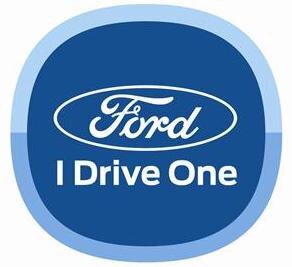-
Files
-
Popular Contributors
-
Posts
-
Just reminds me we will probably be going back to the times of checking the glovebox... "is there a lightbulb in it,or not?" I read another article a few weeks ago, in which someone from Ford discussed (to paraphrase) that most buyers don't feel a need to have a badge on their vehicle to advertise the engine. Which in my world it's like "Hmm, damn right I want people to see I have the 3.0L V6 AWD, I damn paid for it, and yes that Mustang owner will want that 5.0L V8 GT badge to be displayed. Save pennies by taking that stupid Ecoboost label if they wish to save pennies. Reminds me of the "ABS" label that 80s vehicles would carry...🙄
-
Personally, I'd like to see what Ford could do with the F150 and 2.7EB and hybrid. My guess is the juice wasn't worth the squeeze vs the 3.5EB. But Ford did a decent job on the Nautilus and it's 2.0EB and hybrid option. Seems to be returning good fuel numbers on Fuelly.com for a vehicle of that size.
-
Well, that really answers the question... it's just a cost cutting move. I was willing to give Ford the benefit of doubt on JDP IQS and other factors but it's just an easy way to cut a couple of hundred dollars out of the car.
-
There is no free lunch. Any discussion about EREV, PHEV vs. EV or ICE only powertrain has to start with acknowledging the compromises. EREV and PHEV have real challenges meeting emission standards due to cold-start. The EPA and CARB emission testing allows for slightly elevated emissions during initial cold start but requires the car to level off the emission during steady state operation. The problem for PHEV and EREV is the engine could kick in from a cold-start during the steady state operation and so they require some expensive emission mitigation. This is why some car companies decided to abandon PHEV development in the late 2010s and early 2020s. They add a lot of complexity to the drivetrain which means cars will cost more. Long term, I see EREV and PHEV primarily as a solution to more expensive vehicles. Cheaper cars will converge on what is the simplest and thus cheapest drivetrain to implement - i.e. EV Turbo charge vs. naturally aspirated also comes down to compromises. The average car weights 25% more than it did in 2000. What was acceptable power with small naturally aspirated engine is no longer acceptable for 2025. Toyota Corolla Cross non-hybrid takes about 9.5 seconds to go from 0-60 with 2.0 I4 making 169hp. It is one of the slowest new car on sale today. It's unrealistic to think Toyota can slide in a 1.5 I4 making perhaps 130hp in that car... we will be talking about 0-60 time in mid-teens like the 1970s again. Ford's direct competitor is Bronco Sport 1.5T makes 181hp (but a lot more torque) and does 0-60 in more acceptable 8.4 seconds. Toyota decided its buyers doesn't care about driving dynamics and Ford does and so the powertrain decisions diverge - these are the compromises one has to accept.
-
By Sherminator98 · Posted
and there isn’t a viable alternative to it outside of using an EREV setup. ECVT won’t meet the requirements for towing heavy loads. -
Where did you get that I’m pushing for turbo engines for hybrids? Absolutely not. I’ve pushed for Atkinson engines, but they are Naturally Aspirated, not turbo.
-
2026 Lincoln Aviator Retains Panoramic Roof, Unlike Explorer
-
What makes you think I’m referring to existing R10 transmission? That’s the very first thing that needs to be replaced.
-
This is a silly example. Being BEV doesn't automatically make it look better. Giving people a choice between something that looks like the family truckster and something that looks like an exotic sports car next to each other, people will like the exotic better regardless of powertrain. Different use cases? Your whole argument has been NA engines are better, yet when talking about hybrids, then you push Ford to use a turbo? A powertrain that works in one application may not be optimal for another application.
-
-
Topics
-
Top Downloads
-









